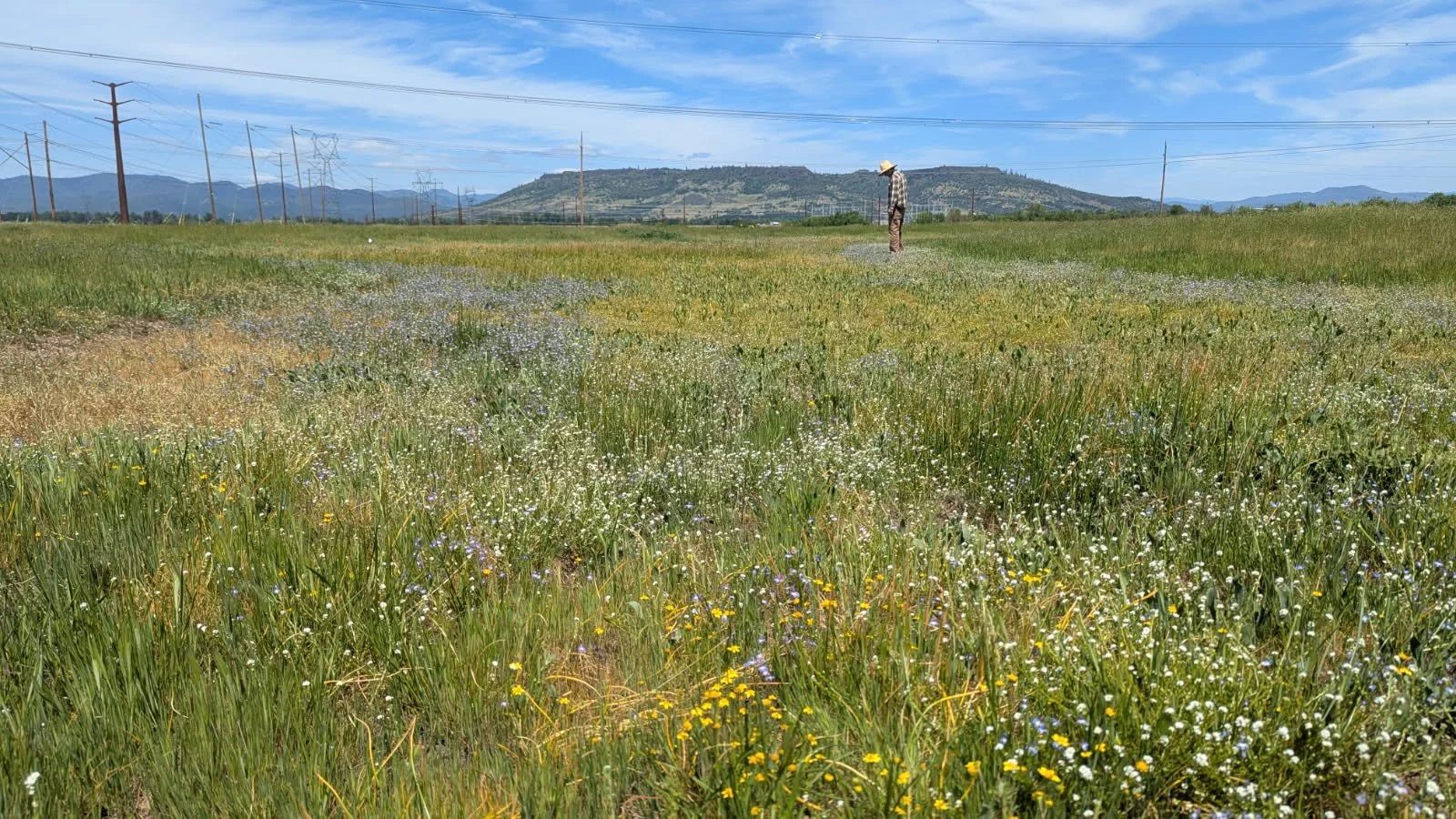About VERN
VERN is a collaborative partnership working to conserve and restore vernal pool habitats in Southern Oregon through science-based restoration, shared stewardship, and community engagement.
Restoring Rare Habitats & Leveraging Partnership


























Who We Are
A place-based, multi-stakeholder network of landowners, scientists, land managers, and community organizations focused on the long-term stewardship of ecologically significant vernal pool landscapes. Convened by The Understory Initiative, with coordination support and science advising provided by Groundtruth Ecological
VERN Partners
Why Vernal Pools Matter
The Rogue River Valley is home to one of Oregon’s most unique ecosystems: vernal pools. These seasonal wetlands—often called the Agate Desert—form in shallow depressions between ancient mounded topography. When the rains arrive, the low spots fill with water, creating temporary aquatic habitats that support an extraordinary range of life.
These pools are biodiversity hotspots, harboring rare and federally listed species like Cook’s desert parsley, large-flowered woolly meadowfoam, and the vernal pool fairy shrimp. Many of these plants and animals exist nowhere else.
Southwestern Oregon’s vernal wetlands are also ecologically significant on a broader scale. They represent the northernmost extension of California’s iconic vernal pool system and sit at the intersection of the California Floristic Province and the Klamath Mountains ecoregion—an area recognized as a biodiversity priority by Oregon’s Conservation Strategy.
But these habitats are in trouble. Over 90% of mounded vernal pools in the Rogue Valley have been lost or degraded due to development, agriculture, hydrologic changes, and invasive species. Less than a quarter of historic wetlands remain functional—and even those have seen serious impacts.
The good news? Restoration works. Recent efforts by our partners have shown that even heavily damaged sites can be revived—restoring native plant communities, ecosystem functions, and habitat for endangered species.
VERN is building on these successes to scale up vernal pool conservation across the landscape. Through collaboration, shared resources, and science-based monitoring, we’re working to protect and restore these irreplaceable habitats for the future.
At-Risk Species Highlight
Cook’s Lomatium
Vernal Pool Fairy Shrimp
Large Flowered Wooly Meadowfoam
More Species Info
-
Lomatium cookii, or Cook's biscuitroot, is a perennial herb native to the Pacific Northwest. It thrives in dry grasslands and rocky areas with well-drained soil. The plant features deeply cut, bright green leaves up to 30 centimeters long, clustered at the base, and produces yellowish, five-petaled flowers in umbrella-like clusters that attract various pollinators. Indigenous peoples traditionally used its starchy, nutritious tubers, which can be eaten raw or cooked. Today, ecologists and conservationists focus on protecting Lomatium cookii amid threats from habitat loss and climate change.
-
Description text goes here
Large-flowered woolly meadowfoam (Limnanthes pumila ssp. grandiflora) is a perennial plant native to California and Oregon. It has large white to pale yellow flowers with deep purple markings, blooming in spring and covering meadows. Growing 10-30 cm tall, it thrives in wet, seasonally inundated habitats. Its woolly stems and leaves minimize water loss. The species is threatened due to habitat loss, playing an important role in local biodiversity. Conservation efforts aim to protect its populations and wetland habitats.
-
The Vernal Pool Fairy Shrimp (Branchinecta lynchi) is a small, freshwater crustacean found primarily in seasonal wetlands known as vernal pools. This species averages around 1 to 2 inches in length and exhibits a translucent body with distinctive elongated antennae used for swimming. It plays a crucial role in the ecosystem, serving as a food source for various animals and contributing to nutrient cycling within its habitat. Vernal Pool Fairy Shrimp are uniquely adapted to their ephemeral environments, with a life cycle that relies on the temporary existence of these pools, allowing them to hatch and thrive before the pools dry up. This species is listed as threatened due to habitat loss and degradation, primarily caused by urban development and agricultural activities.










